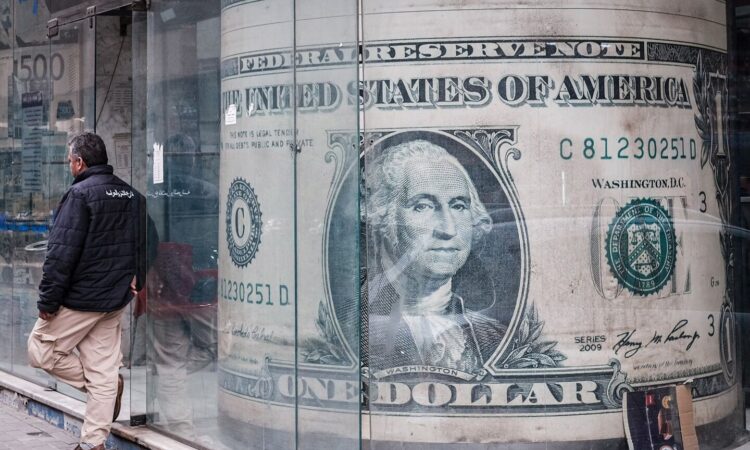
The dollar remains the global currency, with half of the $2 trillion notes in circulation outside the US. In many countries, its retail day-to-day usage supersedes the local currency. Some 40% of the world’s debt is issued in dollars. It affords the US an exorbitant privilege. Its vast current account deficit is far less of a problem, as the imports its voracious consumer sector sucks in are frequently purchased in dollars. It also confers a huge amount of control, as any institution or individual on the wrong side of the US Treasury’s long arm can attest to.
But it also means the US serves as the global lender-of-last-resort. Nearly 60% of global currency reserves are in dollars, with the euro taking second place on 20%. Close to 90% of all foreign exchange trades involve the dollar. The global pandemic stimulus response was underpinned by vast currency swaps between the Federal Reserve and friendly central banks.
While its trade-weighted strength has slipped recently, it’s no coincidence that the greenback has strengthened for most of the period since the global financial crisis. The recent cryptocurrency crash underlines how tough it is to take on the ruling champion. The US economy, along with its bonds and equities, has become the preferred haven for global investors in bad and good economic times alike — a phenomenon known as the dollar smile.
The bigger mooted threat to the greenback’s status is talk of China and Saudi Arabia trading hydrocarbons in non dollars. Saudi has replaced Russia as the largest source of crude for Beijing, supplying 15% of the 350 million barrels China bought in December alone.
Old-as-the-hills barter can work for Chinese trades with Russia, and indeed Iran. But it is unlikely that Saudi will have much use for either Chinese products or yuan, for the equivalent $50 billion annual value of crude oil it exports to the world’s second-largest economy. Invoicing in euros may solve part of the equation, but there are limits there too. Saudi needs to make a return on its currency holdings; US Treasuries not only yield more than either Chinese or European sovereign bonds, but also benefit from being probably the most liquid securities on the planet.
US currency dominance would be undermined if a rival petrocurrency emerged. But there are very good reasons why the vast majority of global hydrocarbon trade is denominated in dollars, and will remain so. The Organization of Petroleum Exporting Countries, now with Russia partially in the fold, is incapable of controlling either the price or supply of crude. It doesn’t have the chops to establish a rival currency.
The obvious advantages for the buck are familiarity and scale. Size matters: Around 40% of global trade is invoiced in dollars, four times larger than the US share of global trade. The greenback accounts for 42% of volume across the SWIFT network for interbank transactions. The yuan’s share is 2%. The euro conducts an impressive 36%, but this is mostly intra-euro zone business between the common currency’s 20 members. The euro’s share of global trade is a more modest 16%. There simply isn’t traction for alternatives to the dollar outside respective domestic zones of influence.
The domestic necessity of controlling one’s own currency hugely outweighs the elusive charms of being part of a supranational network; witness the doubts that still cling to the euro’s fitness for purpose given the economic gaps between its member nations. Until and unless the major Asian powers of India, China, Japan and Korea decide to create a new currency, the dollar will remain the world’s currency of first resort.
More From Bloomberg Opinion:
• South America’s Make-Believe Money Is Either Dangerous or Irrelevant: Eduardo Porter
• How the Federal Reserve Should Talk About Inflation: Editorial
• Central Banks Should Put Growth Before Pride: Marcus Ashworth
This column does not necessarily reflect the opinion of the editorial board or Bloomberg LP and its owners.
Marcus Ashworth is a Bloomberg Opinion columnist covering European markets. Previously, he was chief markets strategist for Haitong Securities in London.
More stories like this are available on bloomberg.com/opinion






